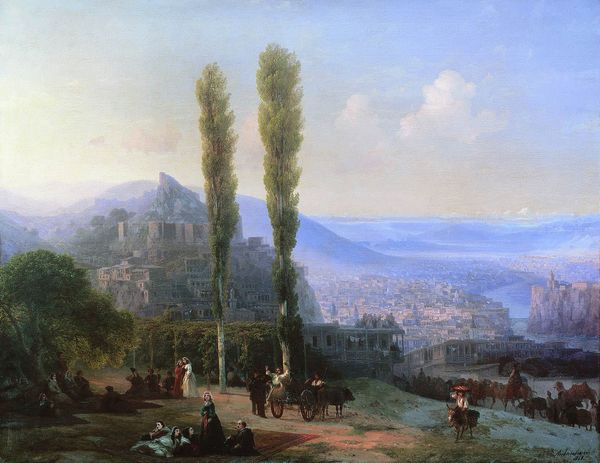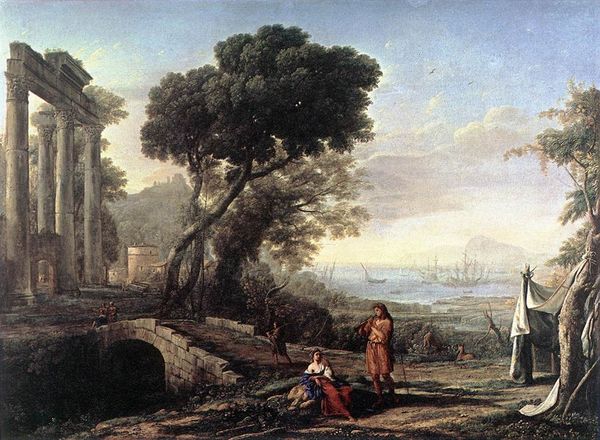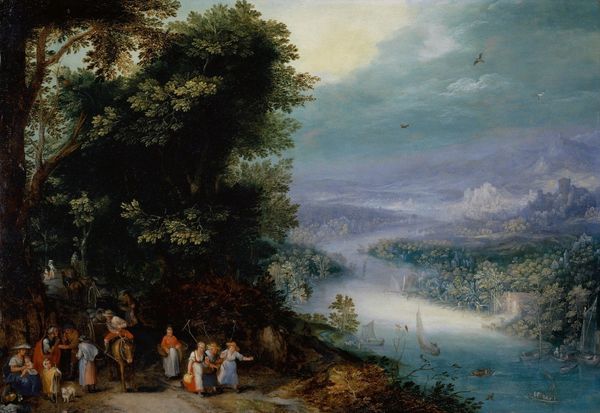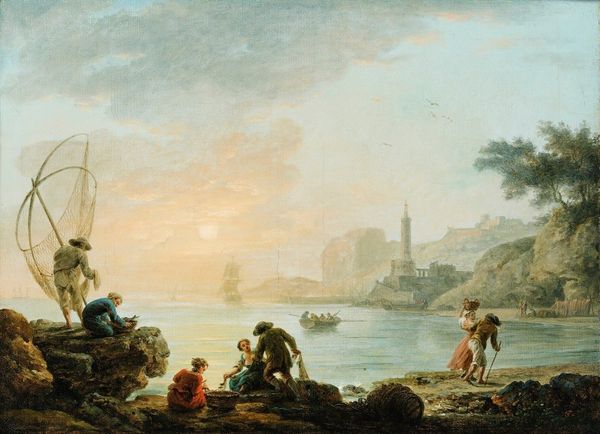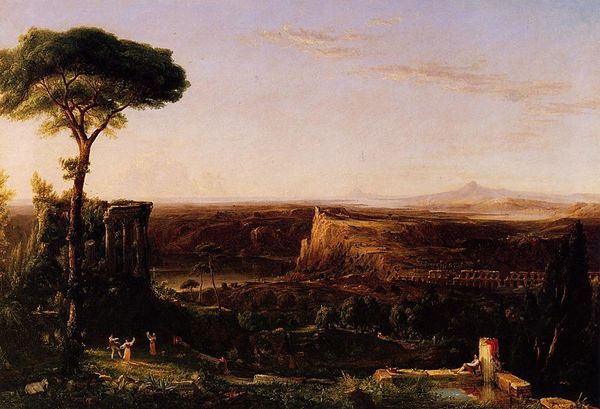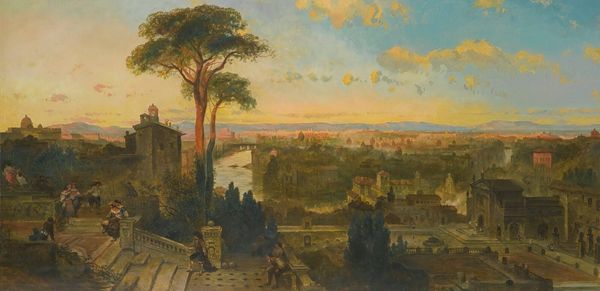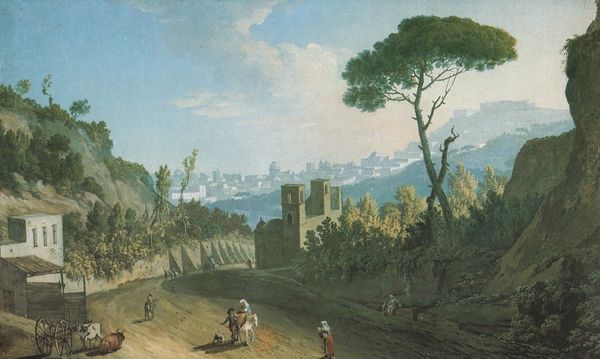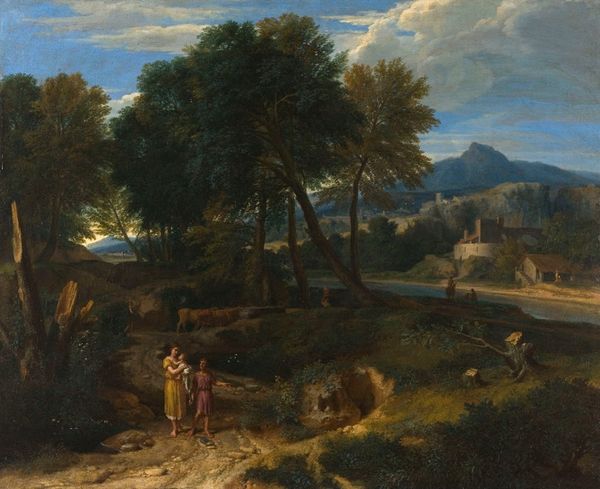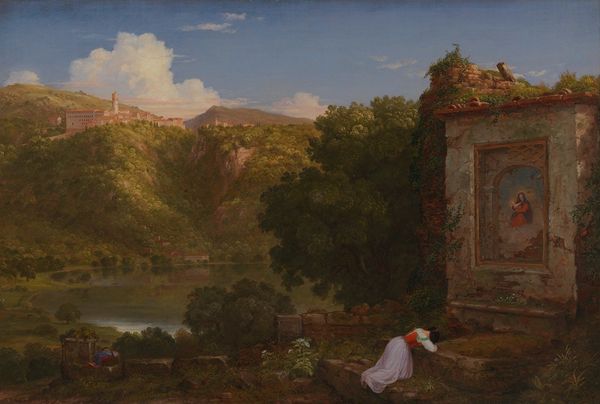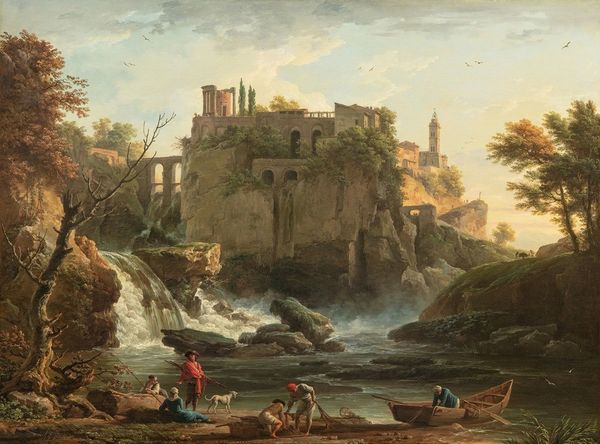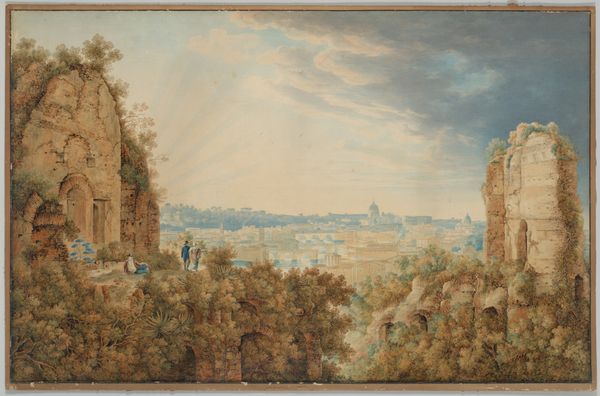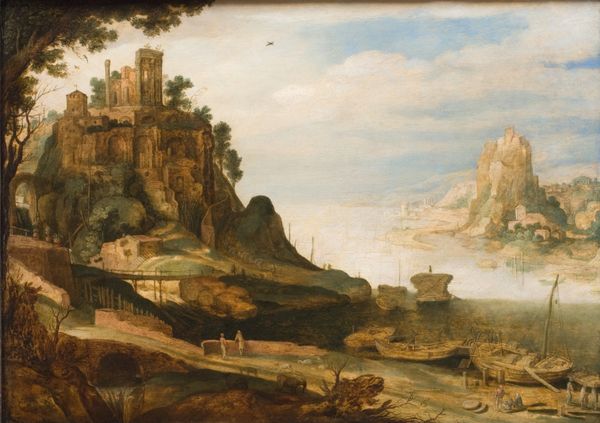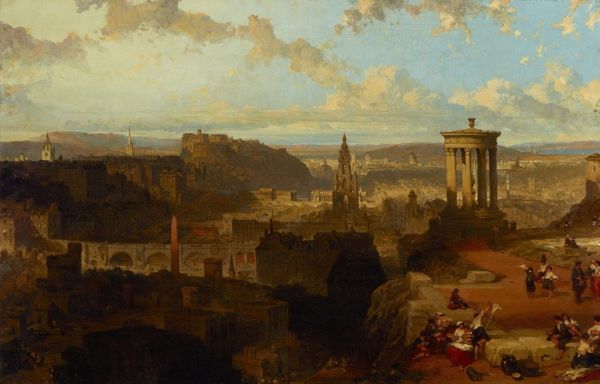
painting, watercolor
#
painting
#
landscape
#
river
#
oil painting
#
watercolor
#
romanticism
#
history-painting
#
watercolor
Copyright: Public domain
Editor: This is David Cox's "Carthage. Aeneas and Achates," made in 1825 with watercolor. The buildings in the distant city seem so sharply defined in contrast to the softness of the land. How do you interpret this work, looking at it through your particular lens? Curator: I notice the tension between the meticulous rendering of Carthage and the looser, more expressive brushwork in the foreground. Consider the socio-economic context: watercolor was becoming more accessible. Cox was likely producing these scenes for a burgeoning middle class interested in travel and the classics, but perhaps without the means for oil paintings or actual travel. Editor: So, the materials and the style point towards a specific market and accessibility? Curator: Exactly. Think about the paper itself, likely mass-produced, versus vellum, a traditional and more expensive support. Cox is utilizing a cheaper support in combination with a burgeoning landscape watercolour tradition. What is suggested when considering it was completed 30 years after Britain outlawed the Slave Trade and a year prior to The Gambia becoming a British Colony? Editor: So the subject becomes fraught. While it appears an idyll of an ancient city, it’s inextricably tied to a period of colonial expansion, a market that demands romanticised landscapes complicit in that system. Curator: Precisely. The materials and techniques speak volumes about the painting's place in the social fabric. Also, where does the material – pigment, the paper, the brush used – originate, and whose labor was it produced by? It challenges us to look beyond just the surface beauty, doesn't it? Editor: It really does. I hadn't thought about the materials themselves having a story to tell about the world in which it was made. It makes me rethink what I thought I knew about landscape paintings in general! Curator: Excellent! That critical awareness of materials and context is key. We move beyond just aesthetics.
Comments
No comments
Be the first to comment and join the conversation on the ultimate creative platform.
